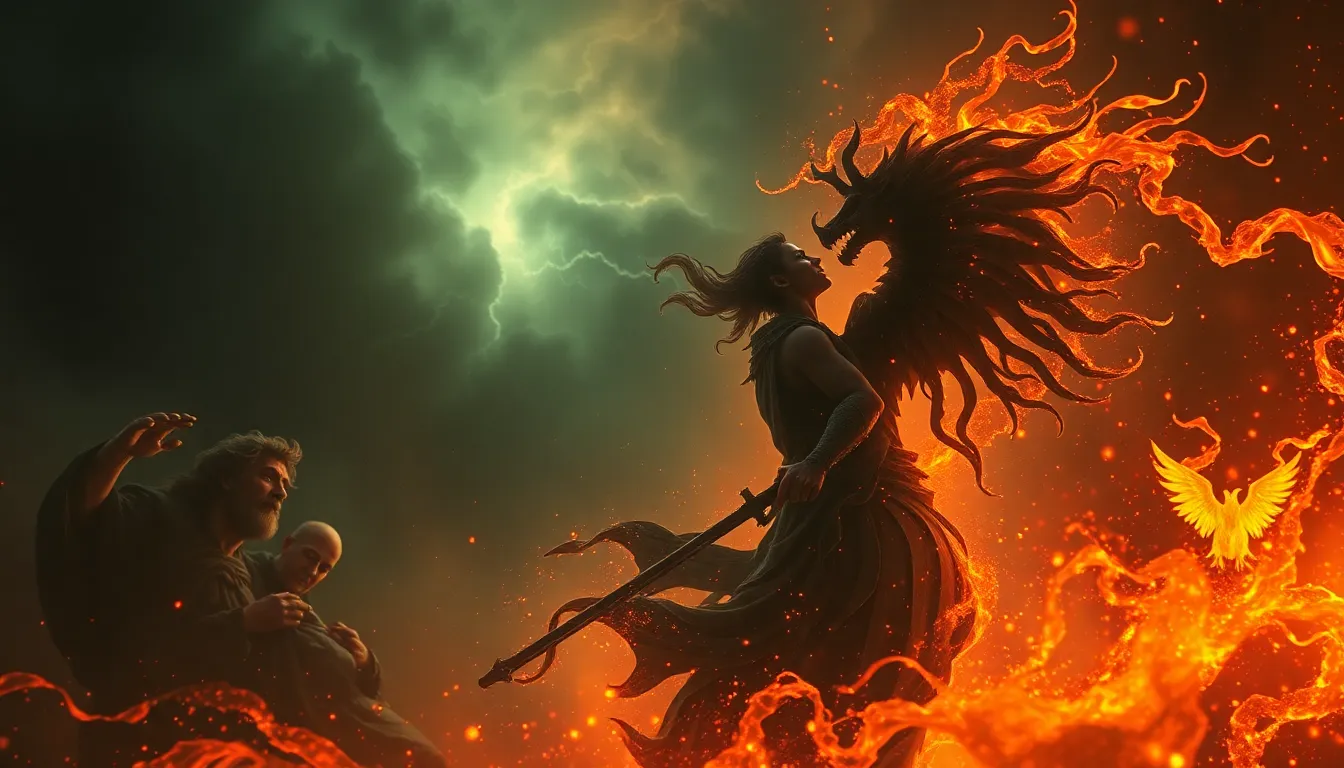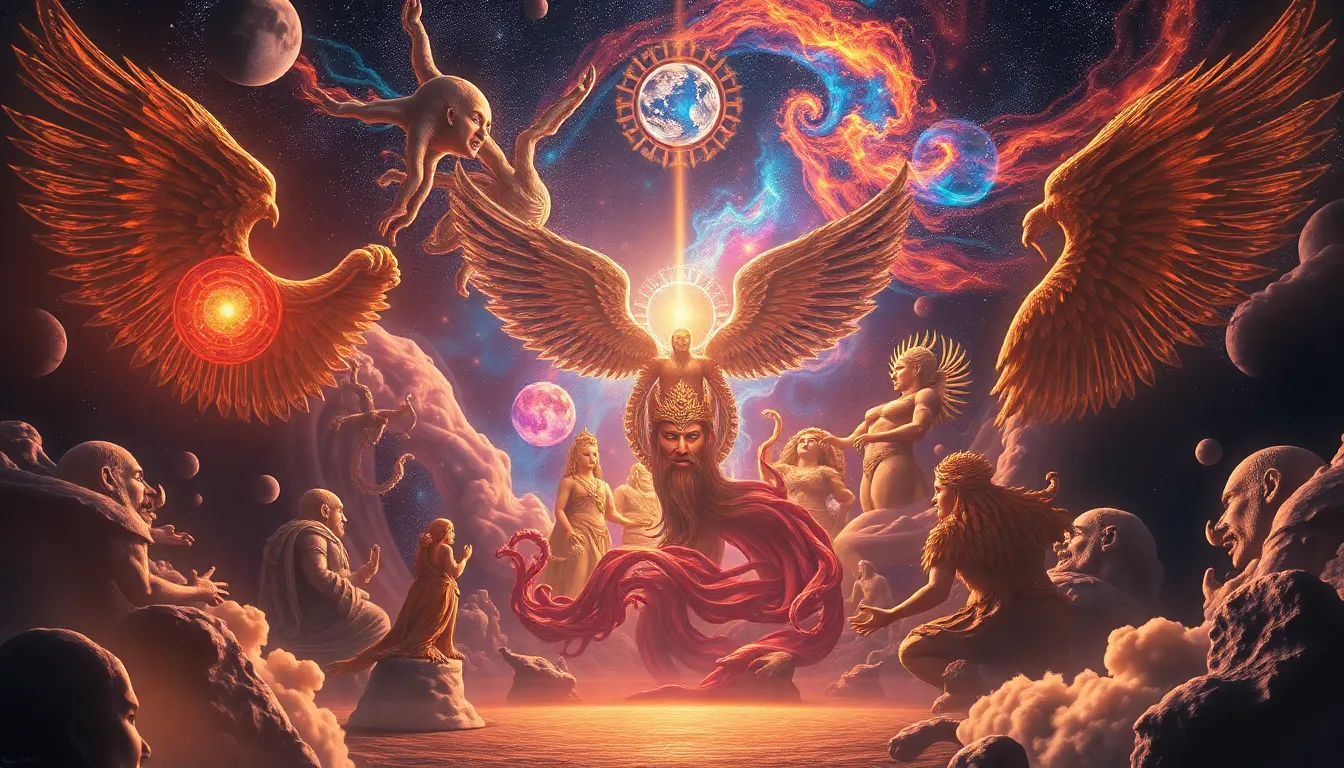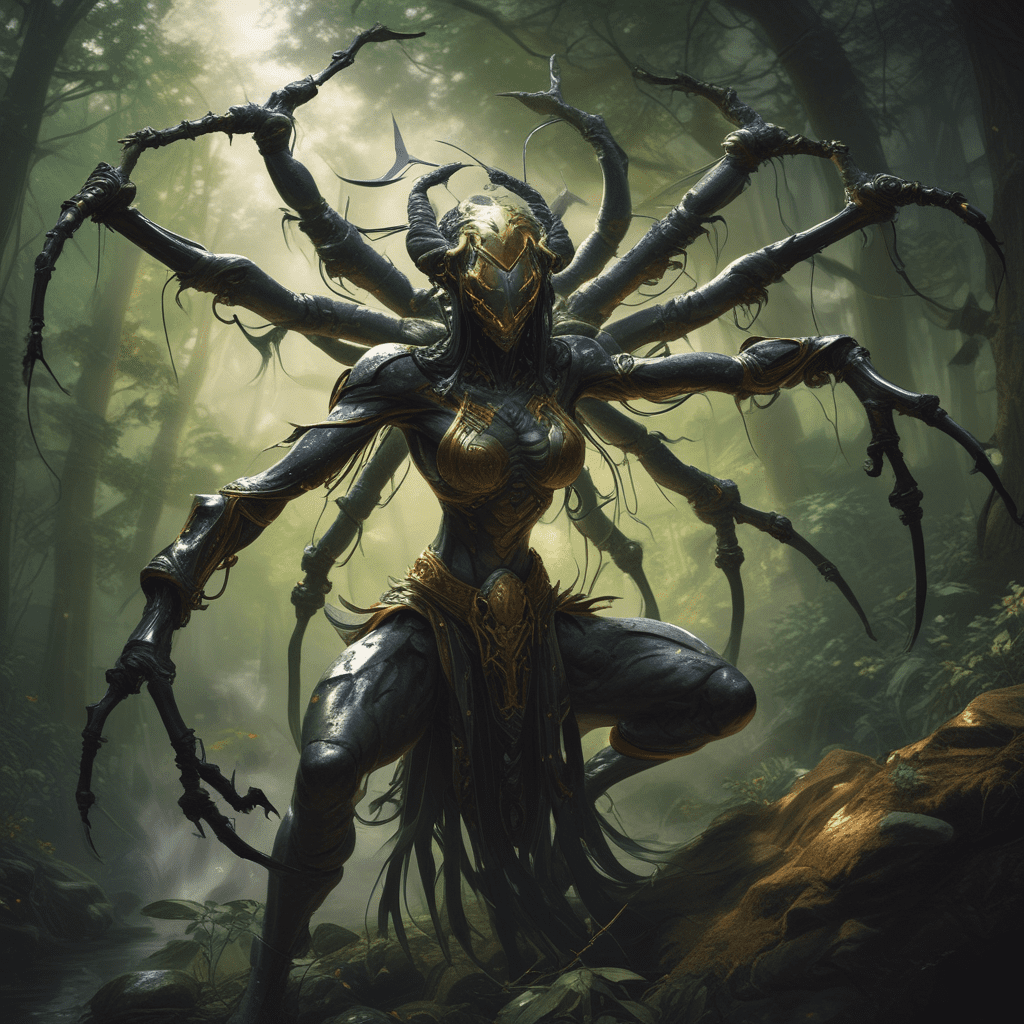From Tragedy to Triumph: Heart-Wrenching Mythical Love Tales
I. Introduction
Mythical love tales are narratives that capture the essence of love through extraordinary circumstances, often involving gods, heroes, and the supernatural. These stories, steeped in cultural heritage, encapsulate the universal emotions associated with love, loss, and redemption.
The significance of love in mythology extends beyond mere romance; it reflects the values, beliefs, and struggles of the societies from which these tales originate. Love serves as a powerful force that drives characters to defy fate, confront challenges, and ultimately emerge transformed.
The theme of tragedy leading to triumph is prevalent in many mythical love stories, where heart-wrenching circumstances give way to hope, renewal, and an enduring legacy of love.
II. The Nature of Mythical Love
Love in mythology is characterized by its intensity and complexity. It often involves:
- Divine interventions
- Unforeseen obstacles
- Transformative experiences
Common archetypes and motifs include star-crossed lovers, the theme of forbidden love, and the idea of love transcending time and space. Fate and destiny play crucial roles, often determining the paths of lovers and the challenges they face.
III. The Tragic Heroes and Heroines
Iconic tragic lovers such as Orpheus and Eurydice, and Pygmalion and Galatea serve as prime examples of how deep emotional connections can lead to both ecstasy and despair.
1. Orpheus and Eurydice
The story of Orpheus, a gifted musician, and his beloved Eurydice, who dies shortly after their wedding, explores themes of love and loss. Orpheus’s descent into the underworld to reclaim her illustrates the lengths one will go for love.
2. Pygmalion and Galatea
Pygmalion, a sculptor who falls in love with a statue he created, symbolizes the transformative power of love, ultimately leading to Galatea being brought to life through his devotion.
These narratives reflect the psychological and emotional depth of their stories, highlighting how love can inspire great acts of courage and sacrifice.
IV. The Forces of Separation
Separation in mythical love tales often stems from various sources:
A. External Conflicts
External conflicts include divine interventions, societal norms, and the whims of fate. For instance, the gods frequently play a pivotal role in testing the lovers’ devotion or obstructing their union.
B. Internal Conflicts
Internal conflicts arise from jealousy, sacrifice, and longing. These emotions can create barriers that lovers must overcome to achieve their goals.
C. Analysis of Pivotal Moments
Key moments of separation often serve as turning points in the narrative, forcing characters to confront their fears and desires.
V. The Journey of Transformation
The hero’s journey in these tales is marked by trials and tribulations that test the strength of love:
A. Trials and Tribulations
These challenges can include dramatic confrontations, quests, and the battle against fate itself.
B. Role of Allies and Mentors
Allies and mentors often guide the protagonists, offering wisdom and support during their darkest moments.
C. Symbolism of Transformation
The transformation experienced by the lovers often symbolizes the growth and evolution of love itself, showcasing how adversity can lead to a deeper understanding of one another.
VI. The Power of Sacrifice
Sacrifice is a recurring theme in mythical love stories, emphasizing the lengths to which individuals will go for love:
A. Theme of Sacrifice
Many lovers face choices that require immense personal sacrifice, often leading to tragedy.
B. Case Studies
- Orpheus’s decision to enter the underworld
- Heroic acts of selflessness by characters like Dido from Virgil’s Aeneid
C. Lasting Impact of Sacrifice
The legacies of these sacrifices resonate through time, shaping cultural narratives and inspiring countless adaptations.
VII. Moments of Revelation and Reconciliation
Turning points in mythical love tales often lead to profound insights and reconciliation:
A. Turning Points
These moments of revelation can lead to acceptance of fate and a renewed understanding of love.
B. Reconciliation with Fate
Characters often come to terms with their destinies, finding peace in their experiences.
C. Examples of Catharsis
Stories like that of Orpheus and Eurydice offer catharsis, illustrating how love can transcend even death.
VIII. Legends of Rebirth and Renewal
The concept of rebirth in love tales highlights the enduring nature of love:
A. Concept of Rebirth
Many stories depict love conquering death or despair, symbolizing resilience.
B. Illustrative Stories
Examples include the tale of Persephone and Hades, where love triumphs over the cycle of life and death.
C. Cultural Influence
The lasting influence of these narratives permeates art, literature, and modern storytelling, shaping how we view love and loss.
IX. Modern Interpretations and Adaptations
These mythical tales have inspired contemporary works across various mediums:
A. Contemporary Inspirations
Films, literature, and art continue to draw from these ancient narratives, reinterpreting them for modern audiences.
B. Analysis of Adaptations
- Movies like “Eternal Sunshine of the Spotless Mind” echo Orpheus’s journey.
- Literary works often reimagine tragic love stories, exploring new dimensions of the theme.
C. Relevance in Today’s Society
The themes of sacrifice, transformation, and the enduring power of love remain relevant, resonating with contemporary audiences and reflecting universal human experiences.
X. Conclusion
In reflection, the resilience of love shines through in these mythical tales, illustrating the profound emotional journeys that define human existence. The enduring power of these stories lies in their ability to connect us with the deepest parts of our humanity, reminding us of the complexities and triumphs of love.
As we explore and appreciate the depth of love stories across cultures, we gain insight into the universal truths that bind us all, reinforcing the notion that love, even in its most tragic forms, can lead to ultimate triumph and rebirth.



